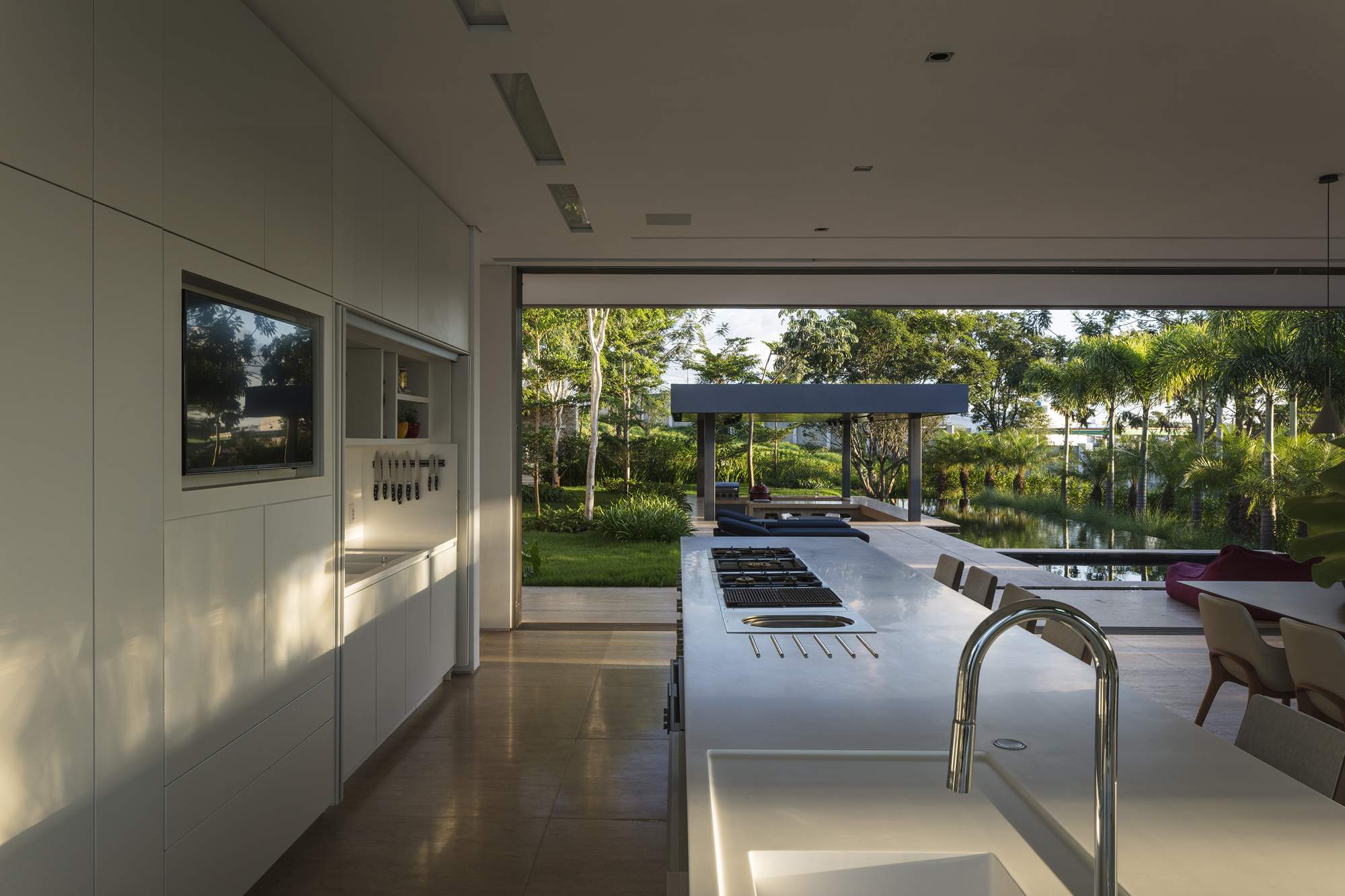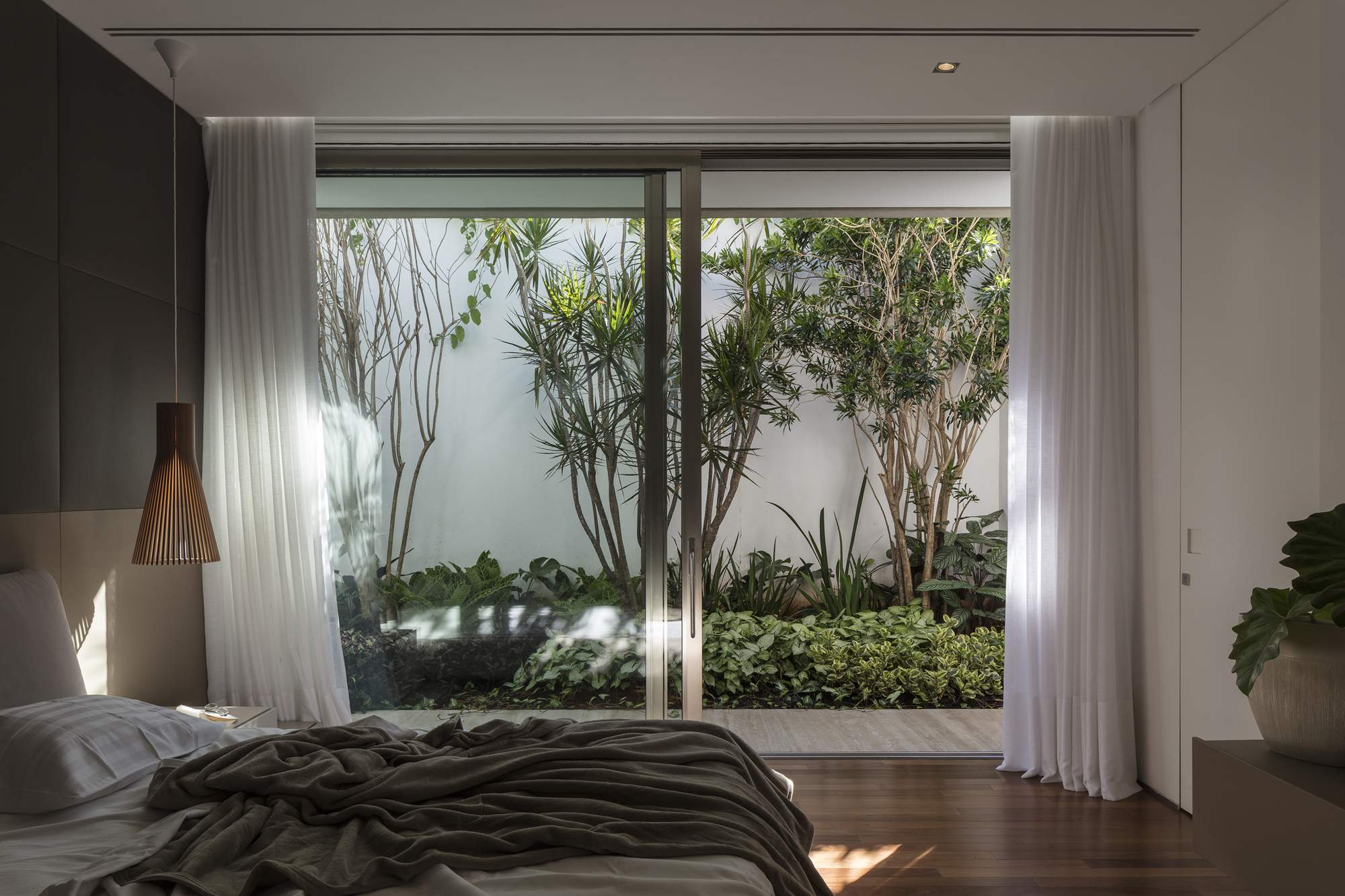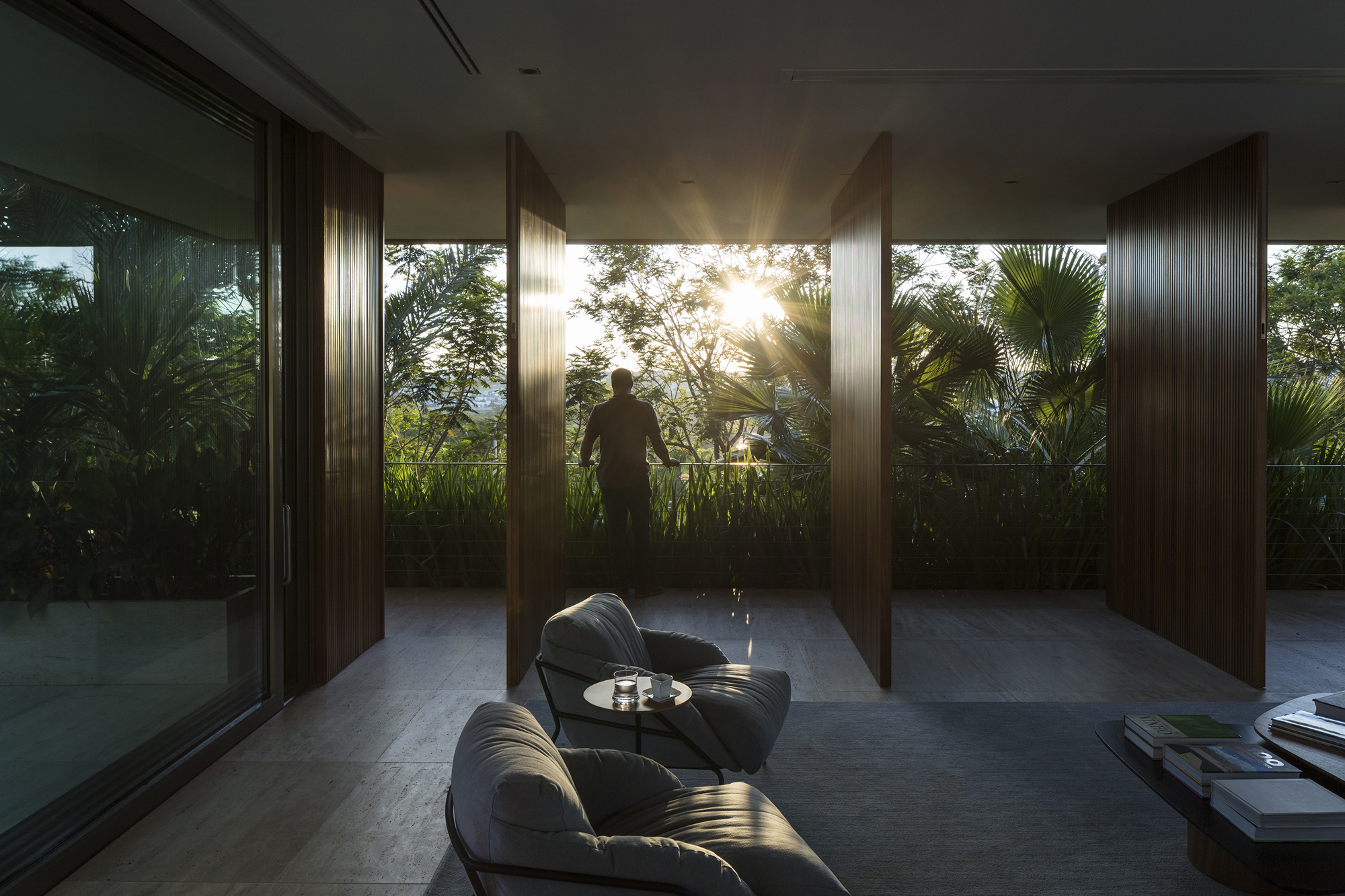Architects: Want to have your project featured? Showcase your work by uploading projects to Architizer and sign up for our inspirational newsletters.
Brazil has long been known for its architectural talent. Its unique geography offers lush vegetation and a large coastline. Responding to this environment, we can see several homes that make the most of this tropical ecosystem by allowing nature to become a part of the design.
The tropical modernist architecture of some of these homes focuses on maximizing natural light and ventilation and using green coverage to create privacy. These private residences often take on a more minimal approach and feature horizontal distributions of mass, flat roofs and large glass exterior walls. Here, the home is stripped down to the most essential functions to allow it to almost dissolve within nature.
RV3 HOUSE
By Aguirre Architecture, Uberlândia, Brazil


One arm of the house contains a large hall and other social functions whereas the other holds all the private rooms that each have their own personal garden. The integration of green spaces improves thermal conditions and creates a microclimate that increases comfort for those living within. To prevent overheating, the western façade is made of four large pivoting doors that can turn into an opaque wall when it gets very sunny.
Jungle House
By Studio MK27, São Paulo, Brazil
Casa Mipibu
By Terra e Tuma Arquitetos Associados, São Paulo, Brazil
As with the previous project, the bedrooms of the home are placed on the ground floor for more privacy and the social and recreational spaces are moved upwards since they receive more light. One of the courtyards also features a water body. Trays of plants are placed above the water body to create an indoor garden. The team has also brought in more nature by planting a tree on the roof deck.
Book House Annex
By Siqueira + Azul Arquitetura, Rio de Janeiro, Brazil
Casa Biblioteca (Library House)
By Atelier Branco Arquitetura, São Paulo, Brazil
Images by Gleeson Paulino, Jaqueline Lessa and Ricardo Bassetti Kaza
The owners had two requirements for this forest retreat: a place to read amid the lush vegetation on the site and a place to think and work with endless views of the skies. Most of the concrete structure is cast in place. A series of horizontal terraces that follow the site’s contours create the different functions in the space without having to create obstructing walls.
This large open volume is capped with a horizontal roof that seems to float on top of the structure because of the large glass walls. The living and dining areas are located furthest from the entrance of the house, adjacent to the largest glass walls, given that this is the brightest space in the house. The sleeping areas lie on the higher inner terraces as those areas are more intimate and dim.
Sand House
By Studio MK27, Trancoso, Brazil
Images by Fernando Guerra
This is another home that opens out to the ocean and embraces the tropical environment. In an attempt to keep the house as open as possible, the enclosed functions of the house are reduced to just five spaces that hold the kitchen, dining area, living room, master bedroom and guest bedroom. These spaces are placed as individual masses in a row on a raised wooden deck. The entire structure is then topped with a eucalyptus pergola supported by fourteen wooden frames.
The canopy also features several punctures to make room for some of the trees that are positioned within the deck and allow more light to trickle down. The beams on the canopy, in combination with the foliage, create stunning shadows throughout that day that further enhance the textural experience of the structure.
Architects: Want to have your project featured? Showcase your work by uploading projects to Architizer and sign up for our inspirational newsletters.
